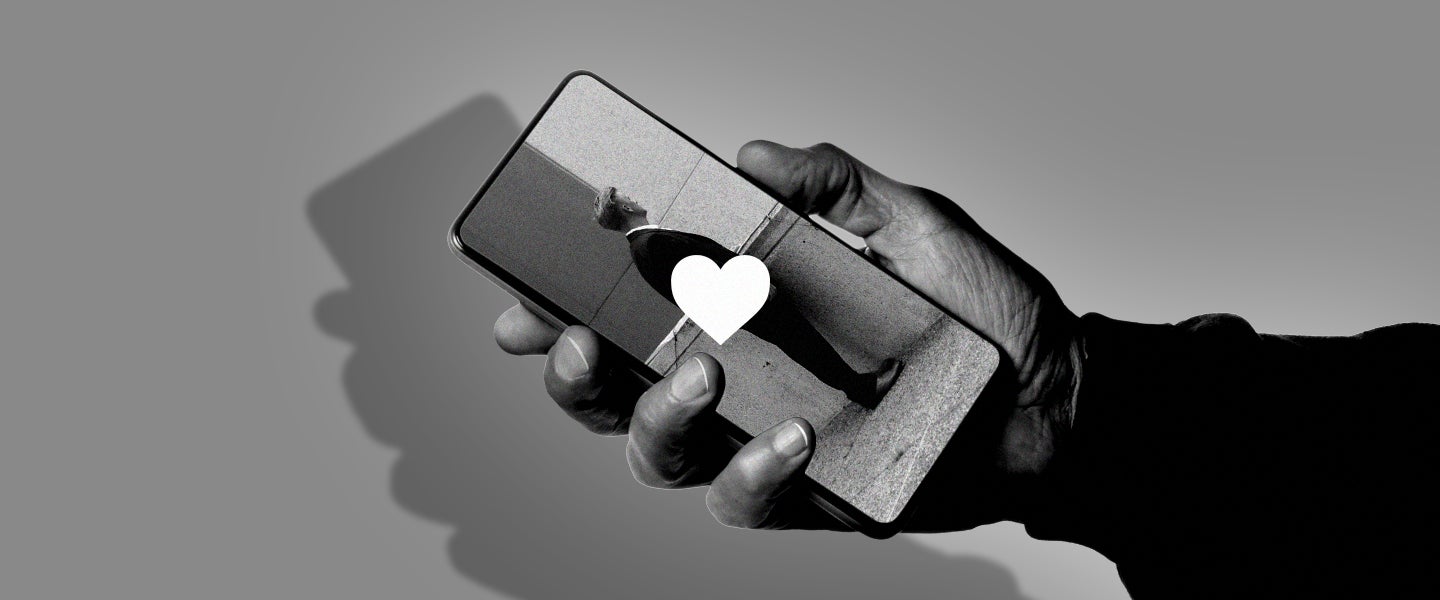There’s a new way to lightly mock straight men, and it involves an Instagram aesthetic common to them. “If you ever want to see what the world is like with no people in it, just look at a straight guy’s Instagram,” Lisa McIntire tweeted in July — an observation that was liked and retweeted more than 1,200 times. Writer Priya Alika Elias made a similar comment last month. “Every straight boy’s IG grid,” she says, comprises the following:
- 2 poorly lit photos of fast food in another city with the caption “Austin you were so good to the boy”
- 1 photo of the skyline with a single emoji
- 5 photos of streets, no humans visible
- 1 photo of them with someone else’s dog
The straight male Instagram aesthetic, these Twitter users argue, is characterized by eschewing people, warmth and emotionality in favor of cold, “arty” shots of inert objects, especially buildings. “No shade, but the straight boy Instagram where it’s just photos of city buildings at strange angles is pretty ubiquitous, right?” Aaron, a 30-year-old textile artist based in Australia, observed as early as August of last year. Comedian Catherine Cohen made a similar point recently, tweeting that “the only way to know someone is definitely straight is if they Instagram buildings.”
As with all lighthearted generalizations about powerful groups of people, the idea that straight men have a self-serious Instagram aesthetic promotes some defensiveness. Many of the replies to the above tweets are men holding themselves out as #NotAllMen counter-examples, screenshotting their grids as evidence that a sole person can be found lurking. Plenty of other replies, though, are good-natured acknowledgements that the observation holds water, and several men posted their grids to show that they do indeed live up to the stereotype.
It’s definitely ubiquitous enough that all the gay men and young women I interview are adamant that it’s a Very Real Thing. “I first noticed it when I started a job in retail and added everyone I was working shifts with on Instagram,” Adam tells me via Twitter DM. “There were a few straight men who had these accounts — just buildings at strange angles, often in black and white.” He adds that he discussed it with his housemate, a female photographer, who said that the style has been dubbed “brotography.”
“It’s definitely a thing, and it’s global in my experience,” Elias, who writes about gender and relationships, tells me. “You see it the most on Instagram, but I think men generally want to take ‘serious’ photos, as opposed to selfies or whatever pictures they think women take. So they’ll photograph inanimate objects and concrete. It could be a boring photo, but it’s art to them.”
Of course, this isn’t the first time someone has pointed out that men tend to define themselves in opposition to femininity, and that the masculine artistic aesthetic is often self-serious, anti-social and a little joyless as a result. Something like this was often at the root of the poptimist critique of rockism — a suspicion of the implicit and sometimes explicit sexism (and racism and homophobia) driving the assumption that guitar music was more artistically serious than other forms of popular music, especially pop. “Rockism isn’t unrelated to older, more familiar prejudices — that’s part of why it’s so powerful, and so worth arguing about,” critic Kelefa Sanneh wrote in a pivotal 2004 essay on rockism for The New York Times. He added:
“The pop star, the disco diva, the lip-syncher, the ‘awesomely bad’ hit maker: Could it really be a coincidence that rockist complaints often pit straight white men against the rest of the world? Like the anti-disco backlash of 25 years ago, the current rockist consensus seems to reflect not just an idea of how music should be made but also an idea about who should be making it.”
Sarah Mesle, too, discusses male aesthetic seriousness in a review of TV critic Emily Nussbaum’s recent book, I Like to Watch: Arguing My Way Through the TV Revolution. She praises the way in which Nussbaum both enjoys women’s television — “she seems to like women, to like stories about women and stories made by and for women, and for women at womanly times” — and treats it as worthy of critical attention. “[H]er presence at The New Yorker makes women’s stories feel serious — and her attention, and the way she can direct New Yorker readers’ attention, makes art about women’s lives feels serious,” Mesle writes. “This feeling is still rare.”
She notes that Nussbaum was praising Buffy the Vampire Slayer in 1999, well before its feminist renaissance, and quotes Nussbaum on the emotional force of women’s TV. “Because Scandal is so playful, and is unafraid to be ridiculous, it has access to emotional colors that rarely show up in [House of Cards’] universe,” Nussbaum writes, “the aesthetics of which insist we take it seriously.” Similarly, she explains that “Jane the Virgin makes genius of genres that get dismissed as fluff, which is how culture regards art that makes women’s lives look like fun.”
Mesle goes on to examine the gendered link between topics that become aesthetically serious versus those dismissed as mere fluff. “The answer to [the question about what topics we take seriously] changes over time, but some answers for the current moment might be: the Civil War, mob violence, Bob Dylan and the number of times Pete Buttigieg (#bless) has managed to read Ulysses,” Mesle notes. To her list of literary and musical examples we might add the following Instagram staples: photographs of buildings, hardcover books, whiskey, street lamps, street food and plain old streets, especially at night. (We certainly wouldn’t add selfies, intricate desserts, pink walls or laughing group shots.)
“Ulysses is a fine book, and I love Bob Dylan until ‘Idiot Wind’ comes on, but it remains irritating that despite the fact that we all know, we have all been saying that seriousness is raced and gendered, we still have to live and work in a world where the seriousness of these dudely topics is projected onto everyone,” Mesle continues. “It feels non-consensual, like it’s been pre-determined that our relationship to aesthetic accounts of white male experience is a serious one.”
Codes about how to be manly — at least according to our traditional conception of gender roles — show up everywhere: in the boardroom, in the bedroom and also in the art world. Men are supposed to be stoic, reserved and unemotional, and so, when we see these qualities reflected back to us in art, the artwork is afforded an automatic seriousness by virtue of its association with masculinity. On the other hand, artworks that fizz with feminine sociability and emotional warmth are dismissed as frivolous, which seems to have resulted in a legion of aspiring male photographers desperately trying to curate an Instagram aesthetic that will be read as serious and masculine.
“We valorize a kind of emotional detachment in men, so they affect that tone even if it’s just on Instagram,” Elias explains. “Men post pictures of their girlfriends or wives with a caption that says, ‘Lunch with this one. Thanks for putting up with my ass,’ and that’s gushing for them,” Priya says. “They’re too scared to be openly enthusiastic.”
“Men’s photos are cold and sterile, like their captions,” she continues. “I’m not sure if straight men know that art can be warm, or that you’re allowed to have feelings for the things you photograph.”
Even if that thing happens to be just a building.

